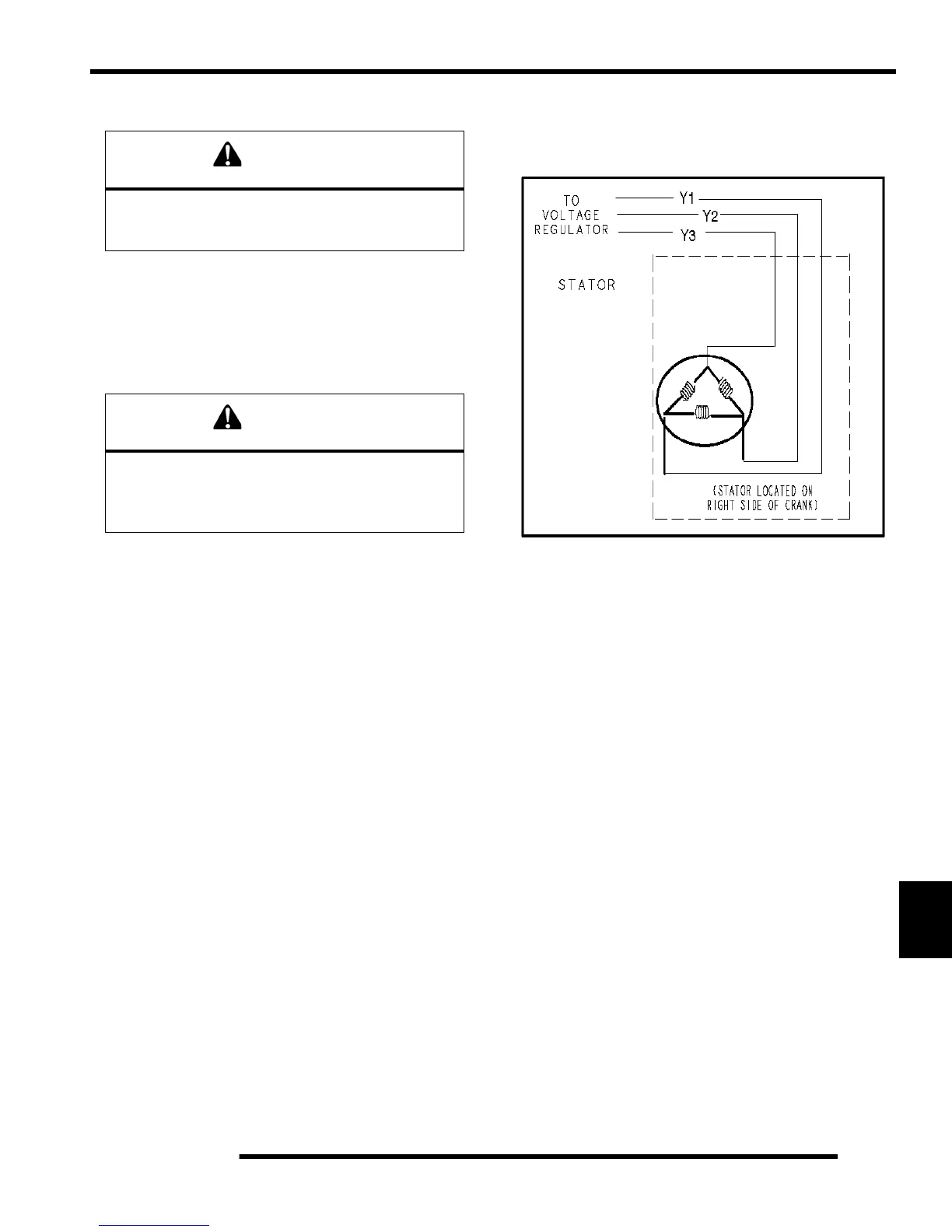10.25
ELECTRICAL
10
9923412 - 2012 Sportsman 400/500 and EFI Tractor Service Manual
© Copyright 2011 Polaris Sales Inc.
Break Even Test
The “break even” point of the charging system is the point
at which the alternator overcomes all system loads (lights,
etc.) and begins to charge the battery. Depending on
battery condition and system load, the break even point
may vary slightly. The battery should be fully charged
before performing this test.
1. Connect a tachometer to the engine.
2. Using an inductive amperage metering device, (set to
DC am
ps) connect to the negative battery cable.
3. With engine off and the key,
kill switch, and lights in
the ON position, the ammeter should read negative
amps (battery discharge). Reverse meter lead if a
positive reading is indicated.
4. Shift transmission into Park and start the engine. With
the
engine running at idle, observe meter readings.
5. Increase engine RPM while observing ammeter and
tacho
meter.
6. Note RPM at which the battery starts to charge
(
ammeter indication is positive).
7. With lights and other electrica
l loads off, the “break
even” point should occur at approximately 1500 RPM
or lower.
8. With the engine running, turn the lights on and engage
p
arking brake lock to keep brake light on.
9. Repeat test, observing ammeter and tachometer.
With lig
hts on, charging should occur at or below 2000
RPM.
Alternator Output Test
Three tests can be performed using a multimeter to
determine the condition of the stator (alternator).
Do not connect or disconnect the battery cable or
ammeter with the engine running. Damage will
occur to electrical components.
Never start the engine with an ammeter connected
in series. Damage to the meter or meter fuse will
result. Do not run test for extended period of time.
Do not run test with high amperage accessories.

